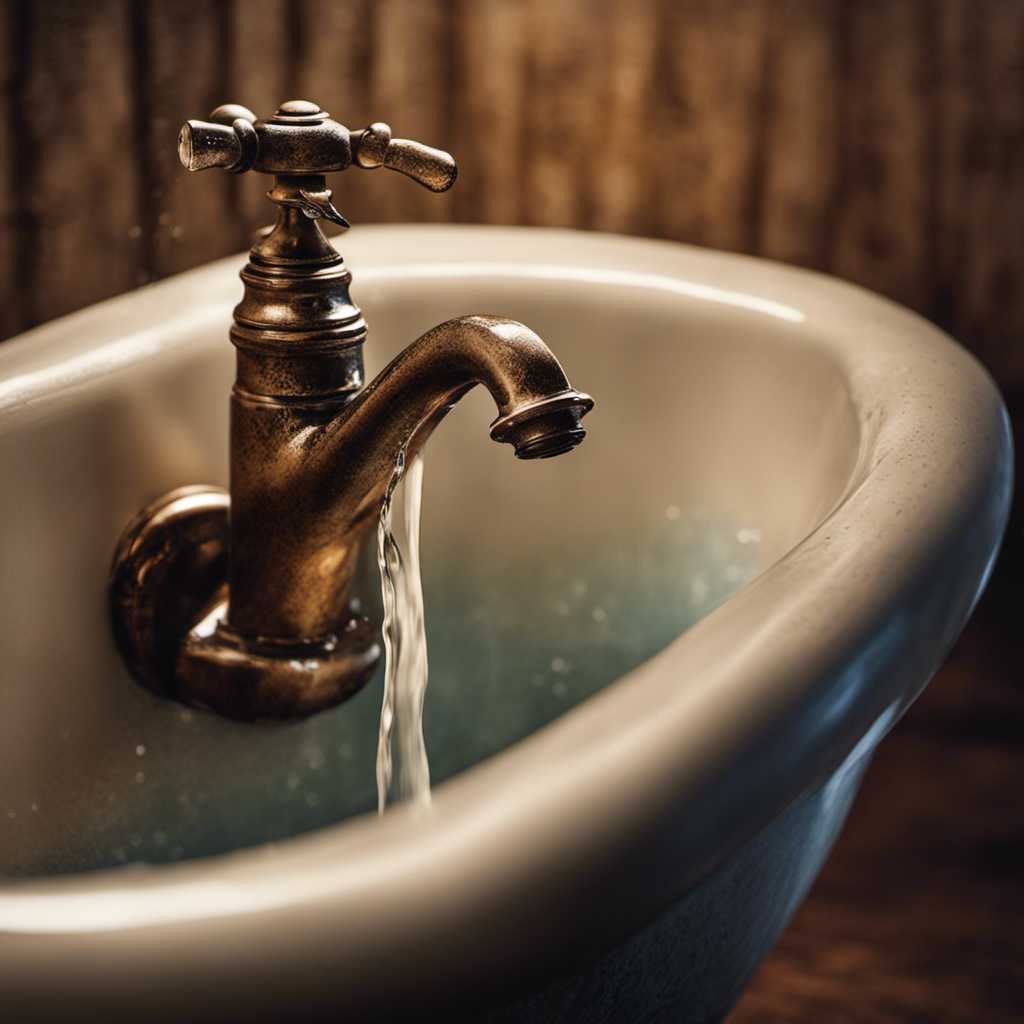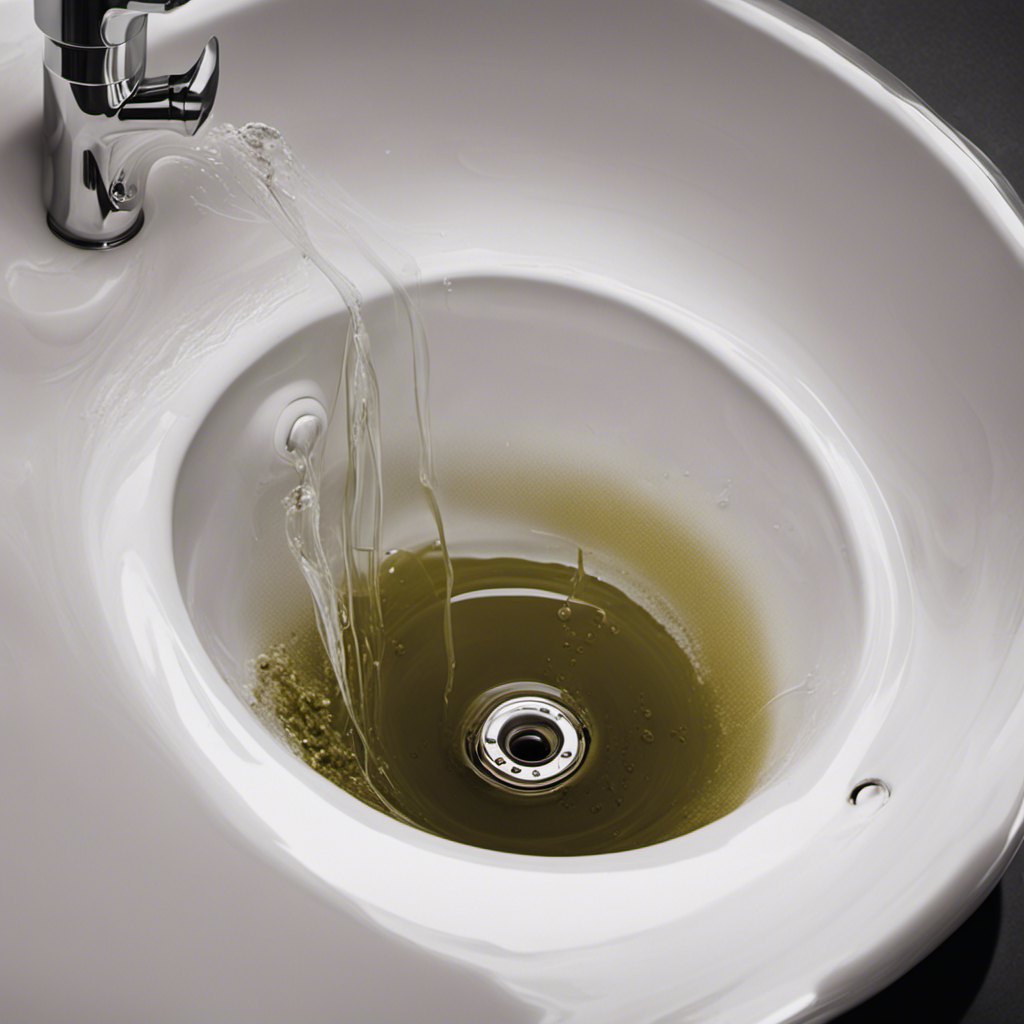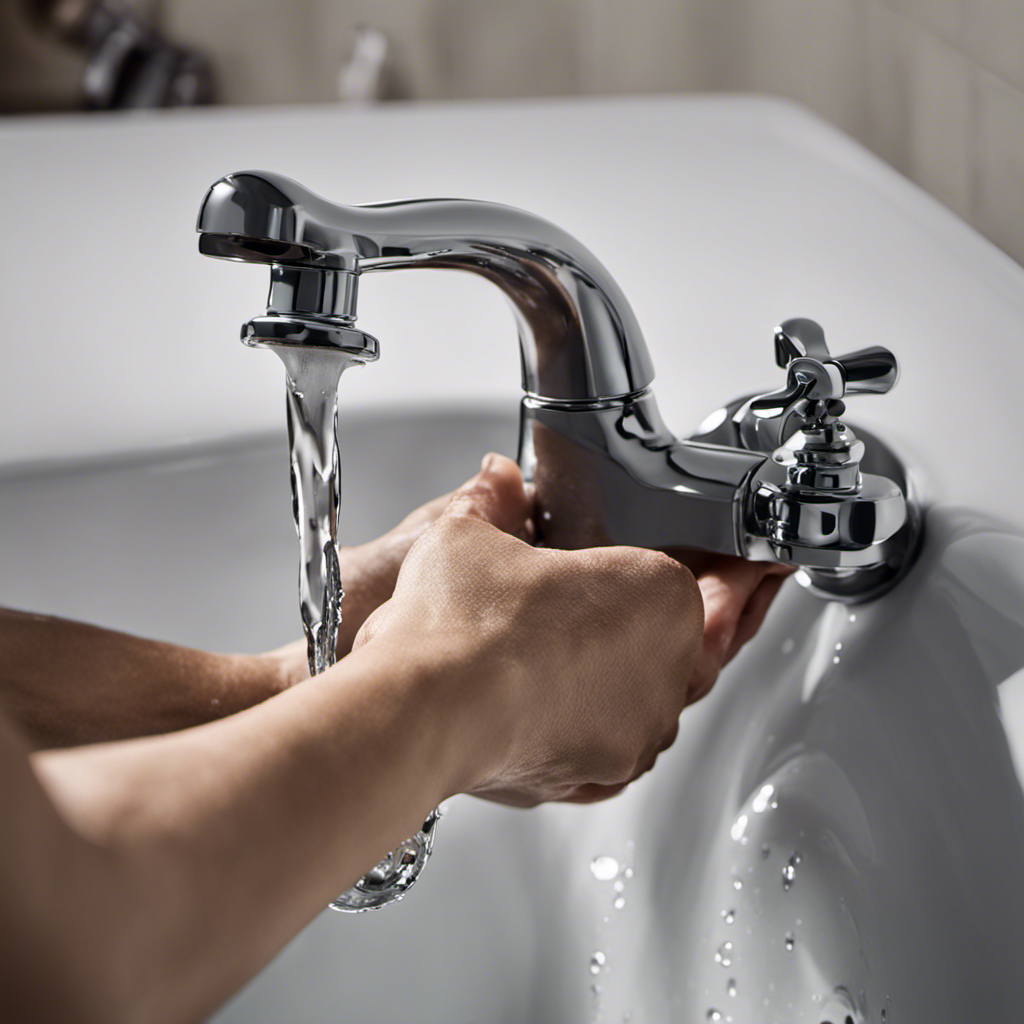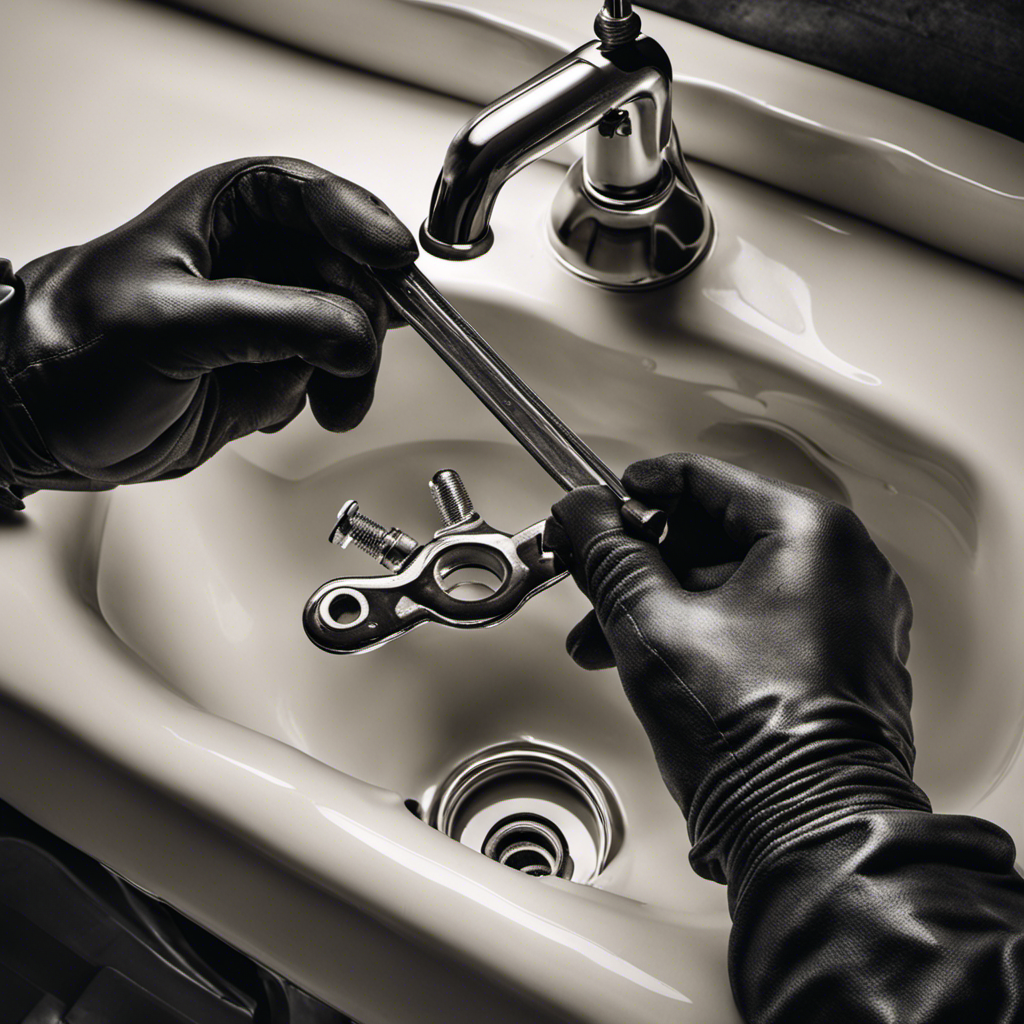Do you find yourself frustrated when your bathtub faucet just won’t turn off? Well, don’t worry, because we’ve got you covered!
In this article, we’ll explore the possible causes of a stubborn bathtub faucet, offer common solutions to fix the issue, and provide signs that indicate when your faucet needs repair or replacement.
We’ll also guide you through troubleshooting steps to help you regain control of your faucet.
So, sit back, relax, and let’s dive into this handy guide!
Key Takeaways
- Possible causes for a bathtub faucet that won’t turn off include a faulty valve, malfunctioning faucet handle, water pressure issues, and worn-out internal components.
- Common solutions for a bathtub faucet that won’t turn off include adjusting water pressure, inspecting and replacing the washer, avoiding common mistakes, and consulting a professional if unsure.
- Signs of a bathtub faucet in need of repair or replacement include persistent dripping, decreased water pressure, difficulty turning off the faucet, corrosion or rust on the faucet, and increased water bill.
- If experiencing persistent leaks, inability to shut off water, strange noises or vibrations, or repeated faucet sticking, it is recommended to call a professional for assistance. Regular maintenance and care can help prevent these issues.
Possible Causes of a Bathtub Faucet That Won’t Turn off
One possible cause of a bathtub faucet that won’t turn off is a faulty valve. When the valve becomes worn or damaged, it can prevent the faucet from closing completely, allowing water to continuously flow.
Another common issue is a faucet handle malfunction. If the handle is loose, broken, or not properly aligned, it may not be able to turn off the water flow effectively.
Additionally, water pressure issues can contribute to a faucet that won’t shut off. High water pressure can cause the valve to struggle in closing fully, while low water pressure can prevent the faucet from sealing tightly.
It is important to address these problems promptly to prevent water waste and potential damage to your plumbing system.
Common Solutions for a Bathtub Faucet That Won’t Turn off
To fix this issue, you might want to try checking the water pressure or inspecting the washer in the faucet.
If your bathtub faucet won’t turn off, there are a few temporary fixes you can try before calling a plumber.
One common solution is to adjust the water pressure. Sometimes, high water pressure can cause the faucet to stay open. You can try adjusting the water pressure regulator or installing a pressure reducing valve to decrease the water flow.
Another temporary fix is to inspect the washer in the faucet. Over time, the washer can wear out or become damaged, causing the faucet to leak. By replacing the washer, you may be able to fix the issue.
However, it’s important to avoid common mistakes when trying to fix a bathtub faucet that won’t turn off. For example, using excessive force to turn the faucet handle can damage the internal components and make the problem worse. Additionally, using the wrong tools or incorrect parts can lead to further issues.
It’s best to consult a professional if you’re unsure about the proper steps to take.
Signs That Your Bathtub Faucet Needs Repair or Replacement
If you notice a constant drip or a significant decrease in water pressure, it may be a sign that your bathtub faucet needs repair or replacement. Don’t ignore these common signs of damage, as they can lead to bigger issues down the line.
Here are four key signs that indicate your bathtub faucet is in need of attention:
-
Leaking: A persistent drip from your faucet is not only annoying, but it can also waste a significant amount of water and increase your water bill.
-
Low water pressure: If you’re experiencing a noticeable decrease in water pressure when using your bathtub, it could be a sign of a faulty faucet or a buildup of mineral deposits.
-
Difficulty turning off: If you find it increasingly difficult to fully shut off your bathtub faucet, it may be due to worn-out internal components that need to be replaced.
-
Corrosion or rust: Visible signs of corrosion or rust on your faucet indicate damage that may affect its functionality and longevity.
If you come across any of these signs, it’s best to address them promptly to avoid further damage. Consider consulting a professional plumber to assess the situation and determine the appropriate repair or replacement solution.
Steps to Troubleshoot a Bathtub Faucet That Won’t Turn off
Check for any visible signs of damage or debris, such as a loose handle or mineral buildup, that could be preventing your bathtub faucet from fully shutting off. If you notice any of these issues, it’s important to address them promptly to avoid further damage and water wastage.
To troubleshoot a bathtub faucet that won’t turn off, start by turning off the water supply to the faucet. Next, remove the handle and inspect it for any cracks or loose parts. Clean any mineral buildup or debris from the handle and other components using a mild cleaning solution and a soft brush. If the problem persists, you may need to replace the cartridge or the entire faucet assembly.
Remember to regularly perform faucet maintenance tips to keep your bathtub faucet in good working condition. When choosing the right bathtub faucet for your bathroom, consider factors such as the style, finish, and functionality that best suit your needs and preferences.
When to Call a Professional for a Bathtub Faucet That Won’t Turn off
If you are unable to resolve the issue with your bathtub faucet not turning off, it may be time to call a professional for assistance. While there are DIY methods for fixing a stuck bathtub faucet handle, sometimes the problem is more complex and requires expert intervention.
Here are four signs that indicate it’s time to seek professional help:
-
Persistent leaks: If your bathtub faucet continues to leak even after attempting DIY fixes, it’s a clear indication that the issue is beyond your expertise.
-
Inability to shut off water: If you’re unable to fully shut off the water flow to your bathtub, it’s important to call a professional plumber immediately to prevent further damage.
-
Strange noises or vibrations: Unusual noises or vibrations coming from your faucet could indicate a more serious underlying issue that requires professional attention.
-
Repeated faucet sticking: If your bathtub faucet repeatedly gets stuck and is difficult to turn off, it’s a sign that there may be a deeper problem that a professional plumber needs to address.
To prevent a bathtub faucet from getting stuck in the first place, regular maintenance and care are essential. Make sure to clean the faucet regularly, lubricate moving parts, and avoid excessive force when turning the handle.
Frequently Asked Questions
How Do I Know if My Bathtub Faucet Is Causing a High Water Bill?
To check for leaks in your bathtub faucet, start by turning off all other water sources in your home. Then, closely inspect the faucet for any drips or running water. Leaks are common causes of high water bills in homes.
Can a Worn-Out Washer in the Bathtub Faucet Cause It to Not Turn Off?
A worn-out washer in your bathtub faucet can indeed cause it to not turn off. It is one of the common bathtub faucet problems and one of the causes of bathtub faucet leaks.
Is It Safe to Use My Bathtub if the Faucet Won’t Turn Off?
It is not safe to use your bathtub if the faucet won’t turn off. Water damage can occur, leading to costly repairs. To fix the issue, try bathtub faucet repair yourself or consider calling a plumber for assistance.
Can a Bathtub Faucet That Won’t Turn off Be Fixed Without Replacing the Entire Unit?
To troubleshoot a bathtub faucet that won’t turn off, try cleaning or replacing the cartridge, checking for leaks or loose connections, and adjusting the water pressure. These repairs may fix the issue without replacing the entire unit.
Are There Any Temporary Solutions to Stop the Water Flow From a Bathtub Faucet That Won’t Turn Off?
If your bathtub faucet won’t turn off, don’t panic. There are temporary fixes you can try before calling a plumber. Start by troubleshooting the issue and following these steps to stop the water flow.
Conclusion
So, there you have it! Now you know why your bathtub faucet won’t turn off and what you can do about it.
From worn-out washers to faulty valves, there are various causes for this issue. Luckily, there are also common solutions like replacing parts or tightening connections.
Just remember to keep an eye out for signs of damage or wear, and don’t hesitate to call a professional if you need assistance.
With these troubleshooting steps, you’ll be able to regain control of your bathtub faucet in no time!










